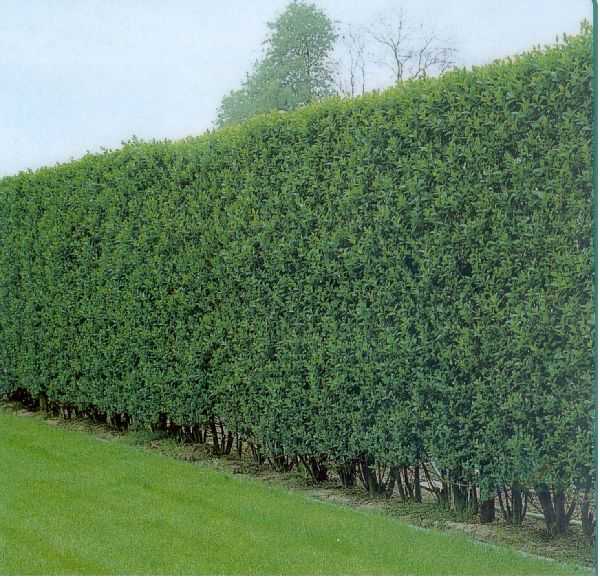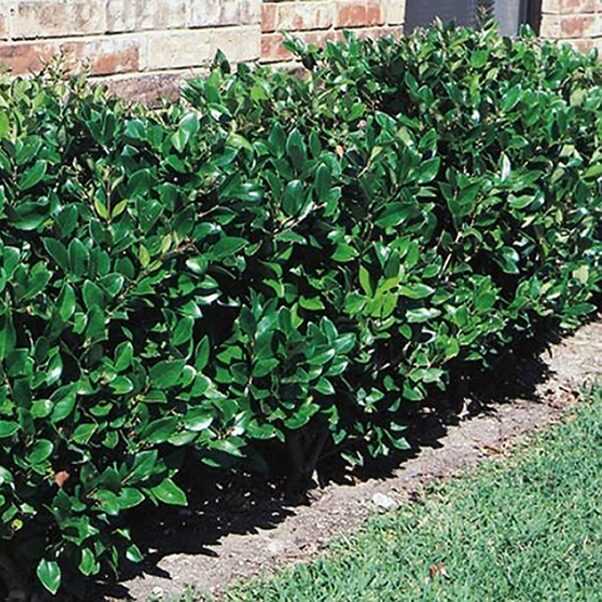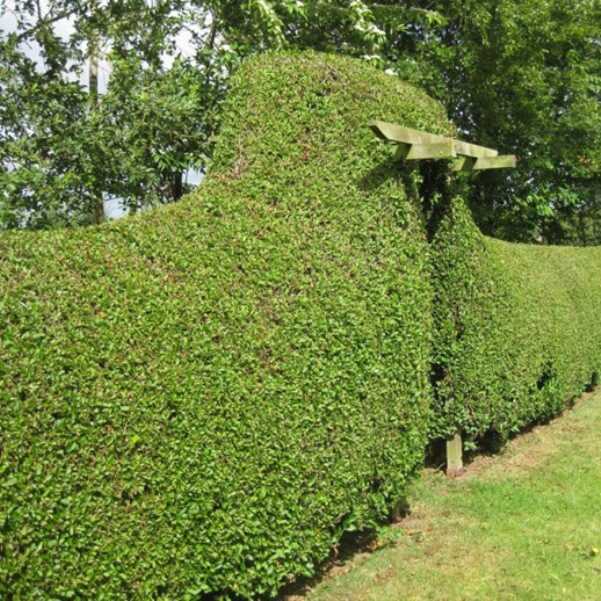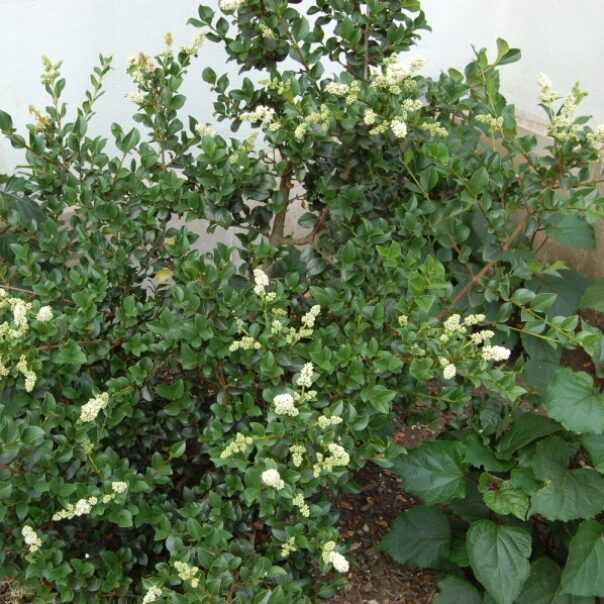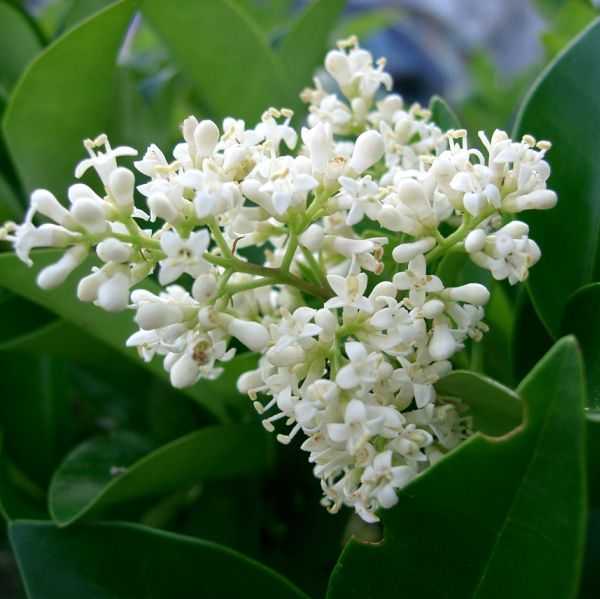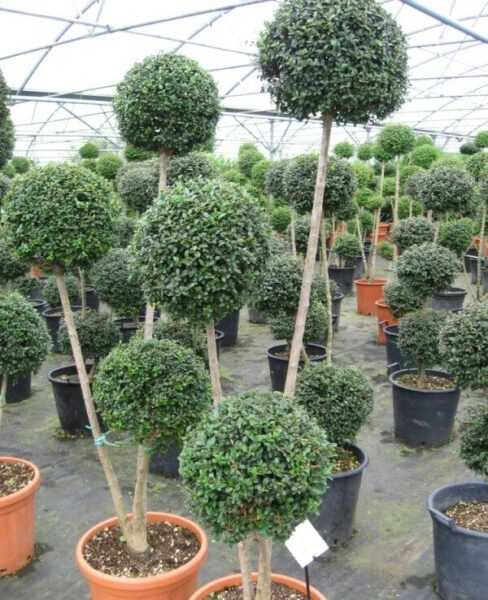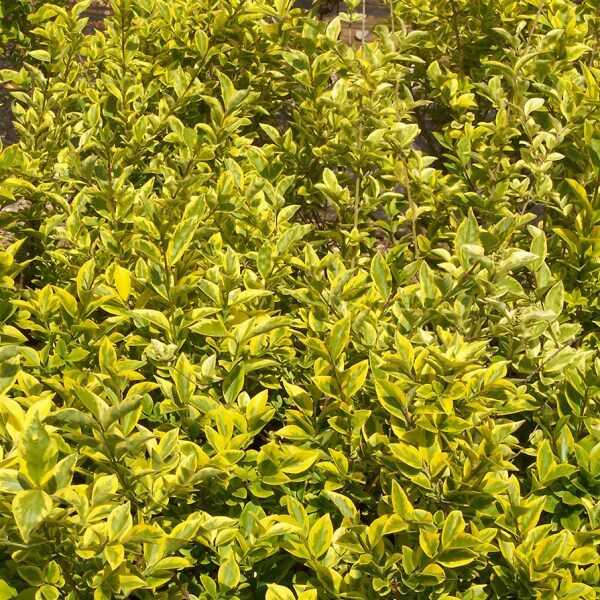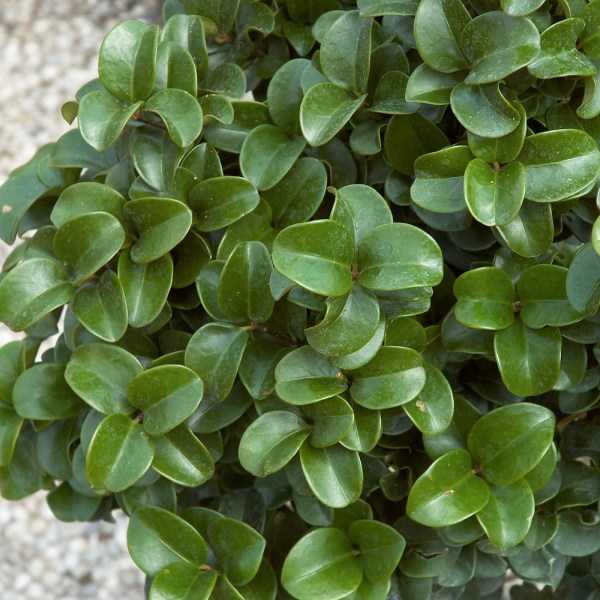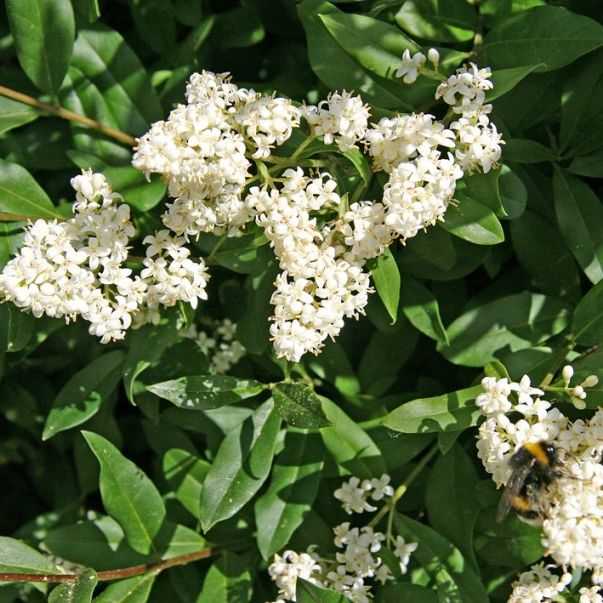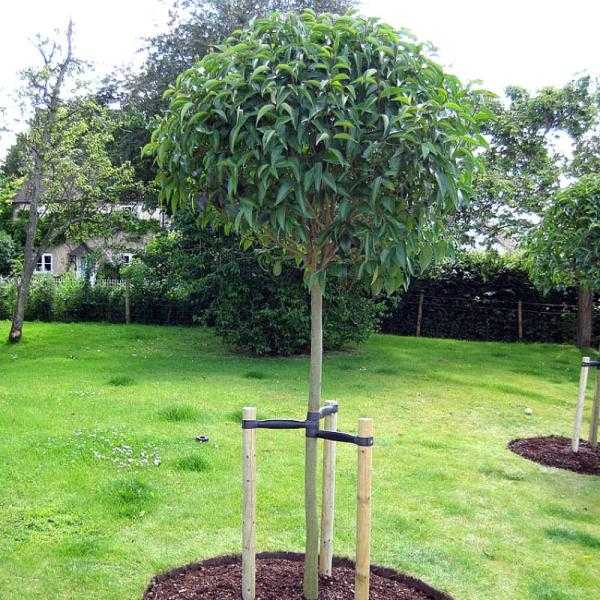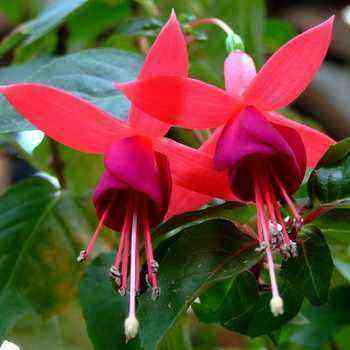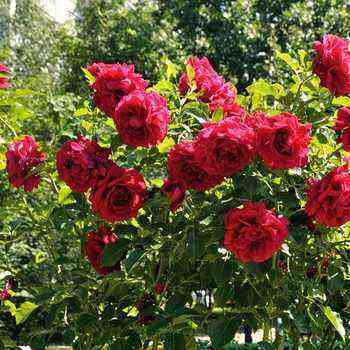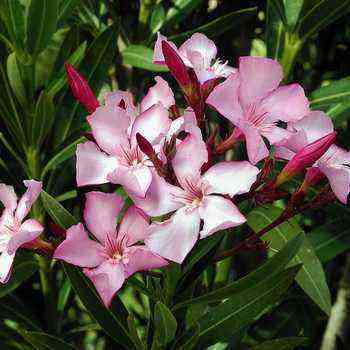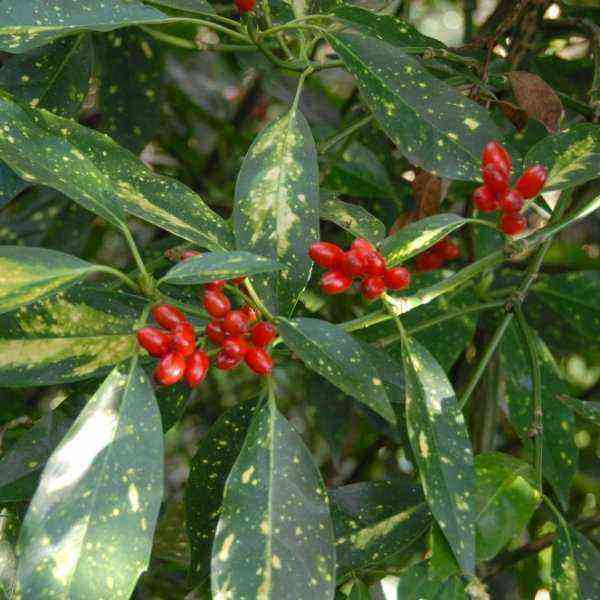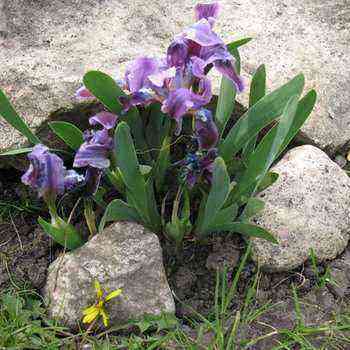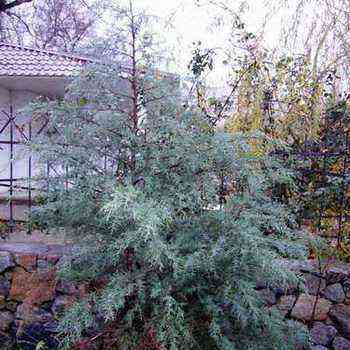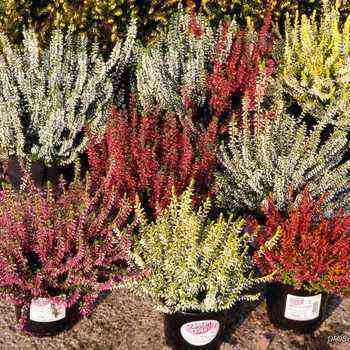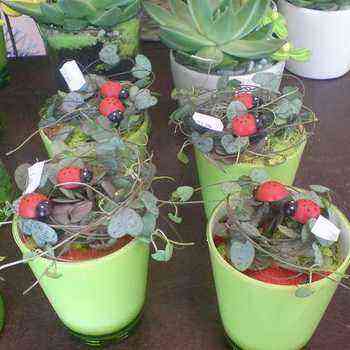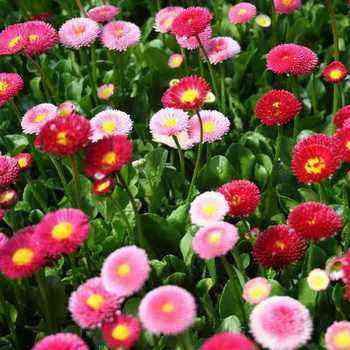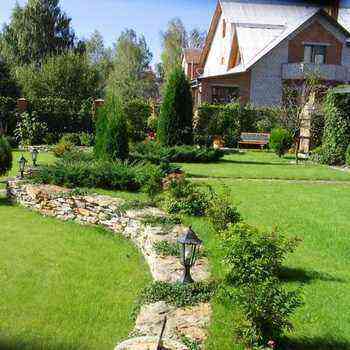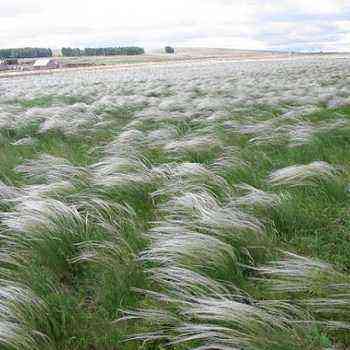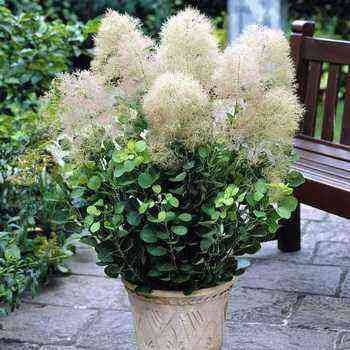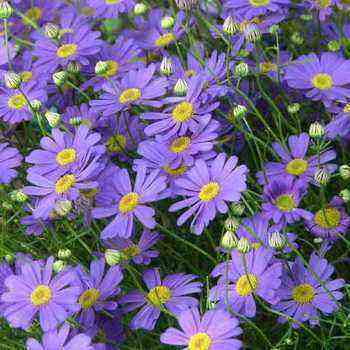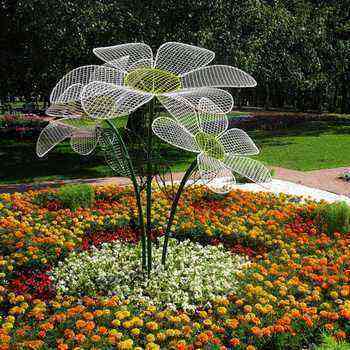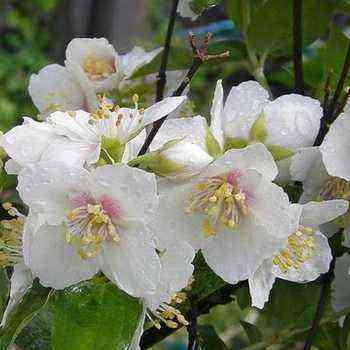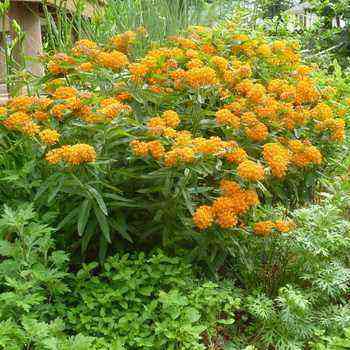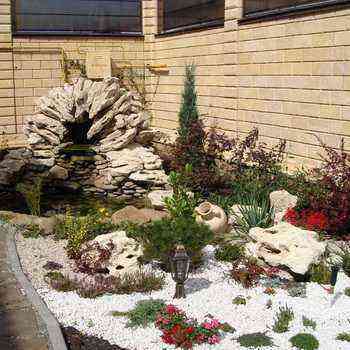The privet shrub is a flowering plant of the Privet family. It has about fifty species of straight, deciduous or evergreen shrubs, sometimes forming small or medium-sized trees. The privet shrub is used for hedges in home gardens as an excellent landscape decoration. The natural habitat of the flower is Europe, North Africa, Asia and Australia. Privet was originally the name for the European evergreen shrub Privet, and later for the more reliable evergreen Burychin ovalifolium, widely used to create hedges from closely planted trees and shrubs. Now the name is applied to all members of the genus. For the first time the generic name was applied by Pliny the Elder to Privet ordinary.
Description of privet and its photo
Some types of privet shrub can grow up to five meters in height and have a stem diameter of 2-2,5 centimeters. The plant has a white bark with a shade of gray and has a smooth structure. Winter buds are ovoid with two outer scales. Apical buds are present. We suggest you read a more detailed description of the privet bush with its photos in various variations.
The leaves are elliptical, as opposed to buds, and are arranged on thin twigs, which, in truth, can sometimes be thick and leathery. Flowers can be both male and female with a white corolla. The cups are small, four-toothed. Each flower has petals that grow together into a tube just below four separate lobes. Look at a photo of privet in various ways of using it:
Flowers privet bears on small panicles along the line of the main axis and on short lateral branches. Flowering time is June-July. The fruit is a drupe containing from one to four seeds. The fruit usually ripens in September or October and lasts through the winter. Sexually mature privet can produce up to one hundred fruits. Most of them are eaten by birds. The plant is used as food for larvae.
Privet care
Caring for the buryuchina should begin with the selection of the correct soil – in our case it will be fertile, but with little salinity and good drainage. A little lime can be added to the finished soil.
It is recommended to grow the flower in the open sun, but it will grow just as well in partial shade. Also privet tolerates both drought and slight waterlogging (but only in small quantities). It firmly endures winter frosts, but strong frosts and severe winter cold can destroy the bush.
You will need less effort in the privet care process if you loosen the soil in time and remove weeds at the place where the privet grows. By the way, you can reduce the number of weeds (and at the same time protect against overheating) using mulching procedures – it is recommended to carry it out not earlier than spring, when the soil has already warmed up enough.
Without regular watering in the process of caring for privet, especially in the hot summer period, the earth begins to crack and the plant slowly fades. Therefore, we recommend that you do not forget about this procedure and constantly water and additionally moisturize the privet shrub, especially in the summer and during the growing season. It is better to water the flower less frequently, but in large quantities – you need to moisten the soil surface by 50 centimeters. During growth and development, the amount of moisture is 30-40 liters, and the number of repetitions is 3 or 4.
One method of caring for the privet shrub is pruning, which is necessary for the plant to maintain its shape and prevent further spread. During the growing season, it is necessary to carry out this procedure at least once and as close to ground level as possible. Subsequent cutting just helps to control the process of the spread and growth of the flower, but does not eradicate it. For the first three years, approximately 1/3 of the trunk will need to be removed – after that, all you need to do is maintain the shape and size of the privet hedge.
Reproduction and planting privet
Most varieties of privet are propagated by cuttings and seeds. The plant grows very quickly and, as a rule, adds 60 centimeters per year.
Seeds for planting privet are obtained from fruits that ripen at the end of October. Basically, this method of reproduction of privet is used for mass, industrial production. Seed germination is 60 percent, so they are used very, very rarely in private gardens and apartments. The bush ripens within five to six years.
Cuttings for reproduction of juiruchina can be woody or summer. We advise you to use a more efficient privet planting option that guarantees almost 100% germination. The stalk should be picked up only after flowering – it should be a young and developed shoot. It is necessary to remove it under the internode. You can grow it in any way – there are a huge number of options on the Internet now. We offer you an old and proven method – place the scions under a plastic bottle, cut off the neck of it and do not forget to make 10-115 small holes that will allow air to penetrate inside. It is worth planting privet for rooting under the shade of large trees so that the plant is in partial shade – the light should only enter through the prism of the tree leaves. After a couple of months, the bottle can already be removed, and the newly-grown bushes can be left until next spring.
Hedge privet varieties
Mainly in the culture cultivated varieties that have high decorative properties and do not require special care during the cultivation process. As a rule, privet varieties for hedges are selected taking into account their technical characteristics, such as leafiness of the bush, stem height and decorativeness throughout the growing season. We offer you brief descriptions of some varieties of privet for hedges on your site.
Common privet and her photo
Common privet is also sometimes referred to as wild privet, common privet, or European privet. The species is native to Central and Southern Europe, North Africa and southwest Asia, from Ireland and southwest Sweden to southern Morocco, from eastern Poland to northwest Iran. These are semi-evergreen or deciduous shrubs up to three meters in height. Stems are tough, erect, with gray-brown mottled bark and small brown lenticels.
The leaves are arranged in cross-like pairs – shiny, oval-shaped, up to 6 centimeters long and 1,5 centimeters wide. Look at the photo of common privet:
Flowers appear in mid-summer in the form of panicles 3-6 centimeters long – each flower is creamy white with a tubular base and a four-lobed corolla up to 6 mm in diameter. The flowers produce a strong, pungent scent that many find unpleasant. Fruit in the form of a small black glossy berry with a diameter of 6-8 mm with 1-4 seeds in each of them. The berries are very poisonous to humans, but are readily eaten by blackbirds. That scatter the seeds.
Plants from a warmer area are more likely to remain evergreen. Sometimes they are even considered as a separate variety. In the British Isles, it is the only privet variety common for use in hedges and woodlands in southern England and Wales, especially in the Cretaceous regions. Less common in Scotland, northern England and northern Ireland.
Oval-leaved privet
Oval-leaved privet is also known as Californian privet. This species is native to Korea and Japan, therefore it is also often called Japanese privet (but confuse with Japanese privet). Often oval-leaf privet is used for tall hedges.
It is a fast growing, dense deciduous shrub. It grows up to 3-4,5 meters in height and width.
The oval privet has thick, fleshy leaves that are green above and greenish-yellowish below. It blooms profusely in mid-summer with white flowers that produce a unique tart aroma that is unpleasant to some. The flower has four curly petals and two tall stamens with yellow and red dust particles, between which a low pistil appears. Petals and stamens fall off after fertilization of the flower, leaving the pistil in the calyx of the tube. Flowering begins after a year of cultivation.
All parts of the plant are poisonous to humans – be careful when caring for the privet.
Japanese privet
Privet is used not only to create hedges, but also for the ancient Japanese art of bonsai. Of all the varieties of the plant, the Japanese privet is the most suitable for this.
It is a large shrub or tree, which usually reaches four meters in height, but is capable of reaching more weighty sizes – six or more meters. The attractive evergreen leaves are unusually pear-shaped with a sharp tip. They have six to eight veins. In spring, white flowers form panicle-shaped clusters up to 20 centimeters long. The plant produces a smell that not everyone will find pleasant. And a huge amount of pollen will simply annoy people.
The flowers are green at the initial stage, but change their color during the ripening process. They persist on the plant for most of the year. The older and larger the tree, the more open its shape becomes and the more attractive the limbs look, creating a bonsai-style tree.
Several variegated varieties of Japanese privet can always be found in some large supermarket. For example, the Rotundifolium variety is a dwarf plant that grows very slowly and usually does not grow above one and a half meters. It has large, rounded leaves and is often used to create low hedges.
Extremely tolerant of various types of soil and is a strong, sturdy plant that requires special care (other than pruning to maintain shape and size).
Japanese privet will grow well in the sun and in partial shade. When planting in the shade, allow air to circulate or you will have problems with whitefly and sooty mold. This problem can still be solved with soapy water. One of the most important mistakes is planting bushes at a close distance from each other – the space between them should be at least one and a half meters.
Golden privet
Golden privet is a variation of Japanese privet or oval-leaved privet with bright golden leaves. A semi-evergreen plant has the brightest leaf colors of any species, especially during winter. Fast growing, they are most often used to hedge an urban garden, but also make an excellent shrub. If trimmed and shaped well, privet can be a very inexpensive and picturesque decoration for your garden.
Golden privet will grow well in almost any soil except wet. She is tolerant of wind and pollution, but the plant should be in a well-lit area.
Glossy oval leaves up to 6 centimeters in length. The center is green, and the edges are a bright golden yellow hue. The bark is grayish-brown with lenticels. The tiny tubular creamy white flowers form a panicle up to 10 centimeters long. Then clusters with black glossy berries appear, which are very poisonous to humans.
Privet brilliant
Privet glistening is a type of flowering plant in the Olive family. It is native to southern China but has become native to a variety of countries: Spain, Italy, Algeria, Canary Islands, New Zealand, Lesotho, South Africa, Japan, Korea, Australia, Norfolk Islands, Chiapas State, Central America, Argentina, and the southern United States ( California, Arizona, Maryland and from Texas to North Carolina).
The name glittery in this case refers to glossy leaves. Shiny hedge privet is the best option in all climates. Look at the photo of a shiny privet:
This small evergreen tree reaches 10 meters in height and width. The leaves are opposite, glossy, dark green in color, up to 17 centimeters long and up to 8 centimeters wide. Flowers are very similar to other types of privet, white or almost white.
Variegated privet
The variegated privet is a type of Chinese privet. The flower has long and pointed leaves with golden fields. In autumn, creamy white flowers bloom, which form into clusters and are a very functional addition to this extraordinary tree.
Round-leaved privet
The round-leaved privet is an evergreen shrub with colorful leaves that retain their color even in winter. The creamy white flowers bloom in mid-summer and can bring honey. The plant takes root well on any soil, but absolutely does not tolerate frost, so it must be grown in a place that will be well protected and insulated.
Privet “Sinense”
Sinense privet is a small evergreen plant native to China, Taiwan and Vietnam (its second name is Chinese privet). A shrub with falling leaves reaches 7 meters in height and has dense hairy shoots. The leaves are opposite, up to seven centimeters long and three centimeters wide.
Cultivated as an ornamental plant for hedges. Often used as a bonsai. It is known that this variety occupies about one million hectares of land and is cultivated everywhere.
